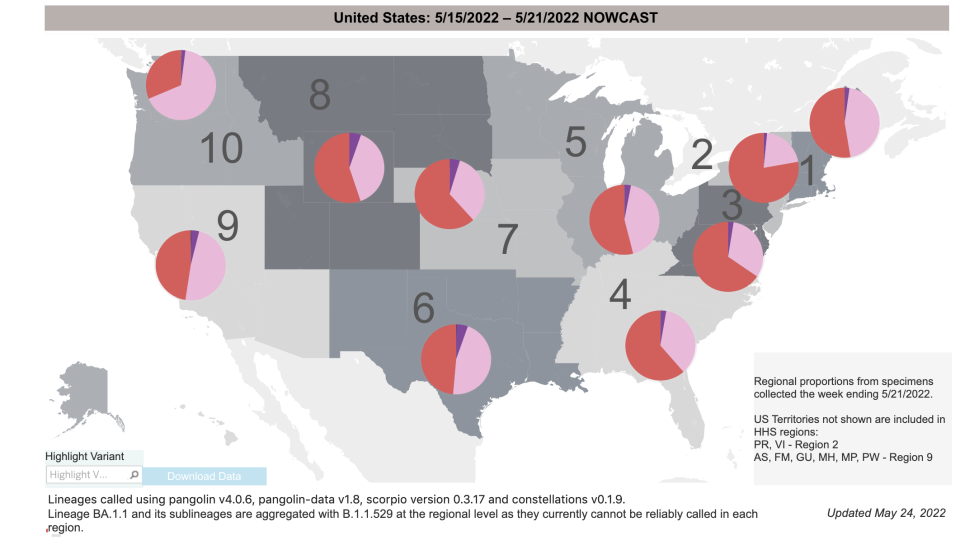Omicron BA.2.12.1 Becomes Dominant Covid Variant in U.S., Accounting For 58% Of New Cases

Two months is all it took.
In mid-March, Omicron BA.2.12.1 and sister subvariant BA.2.12.2 made up only 1.5% of newly-sequenced positive tests in the U.S. Today, they comprise 57.9% of all new positive Covid test samples sequenced to determine the variant involved. And that roughly 58% is likely just about all BA.2.12.1.
More from Deadline
Health Officials Consider Mask Mandates As Covid Cases & Hospitalizations Surge
Paramount Global CEO Bob Bakish Cancels Media Conference Keynote Due To Illness
2022-23 Awards Season Calendar - Dates For The Oscars, Emmys, Tonys, Guilds & More
The Centers for Disease Control and Prevention has released data this month that shows BA.2.12.1 is thought to be 30% more infectious than BA.2.

CDC
The hope with BA.2.12.1 was that it would be less virulent and put fewer people in the hospital. As it gained a hold across the U.S., hospitalizations did not rise, even as cases skyrocketed. Unfortunately, and possibly because of even if a small percent of BA.2.12.1 patients need medical care, the sheer number of cases seems to have begun driving hospitalizations higher.
The current 7-day average number of new patients admitted with the virus is 3,531, according to the CDC. That’s up 15% over last week’s 7-day average.
The good news is that the rate of increase in new cases may be slowing. The 7-day daily average number of new cases was up about 10% in the past week, per CDC data. The week before, the rise in that same daily cases average was 23%. Regional contributing factors muddy the water a bit, however.
The new variants grew most quickly and long ago became dominant in New York State, where BA.2.12.1 is currently at 78%. The region is seeing a drop in positive cases after peaking at a 7-day average of 50 cases per 100,000 residents on May 17 to 45.4 yesterday. That’s still high, but the trend is downward. Hospitalizations in the state are continuing to climb, albeit more slowly.

CDC
But BA.2.12.1 is still spreading across the U.S., and the nation’s most populous state is just seeing it become dominant now, meaning it still has room to grow and drive infections. Today’s data from the CDC indicates that the more transmissible variant has only now climbed to near parity with BA.2 in the three-state region comprised to California, Arizona and Nevada. Cases in California are still on the rise as a result.
One week ago, CDC data put the 7-day average number of new, daily cases in the Golden State at about 8,600. Seven days later, they stand at 14,700, a roughly 50% rise in a number that is averaged to smooth out data reporting fluctuations.
The 14-day average of hospitalized patients in the state is up about 25% over the same period from just over 1,200 to just over 1,500 today.
Best of Deadline
2022-23 Awards Season Calendar - Dates For The Oscars, Emmys, Tonys, Guilds & More
NFL 2022 Schedule: Primetime TV Games, Thanksgiving Menu, Christmas Tripleheader & More
Sign up for Deadline's Newsletter. For the latest news, follow us on Facebook, Twitter, and Instagram.

